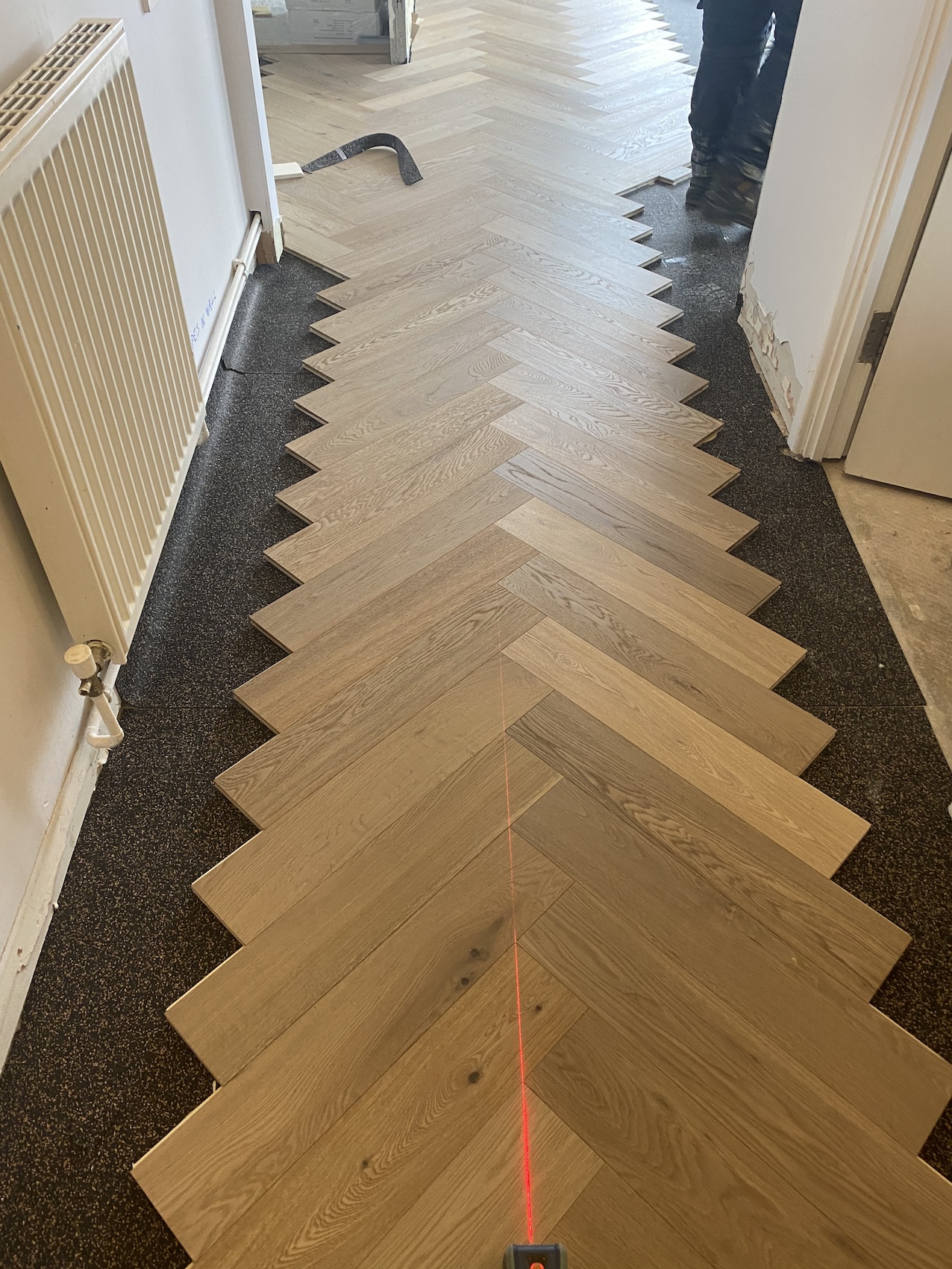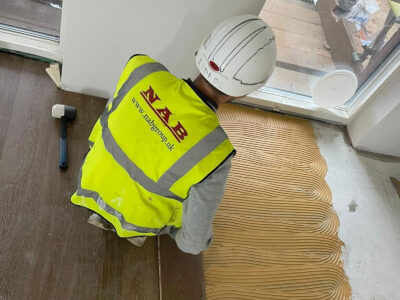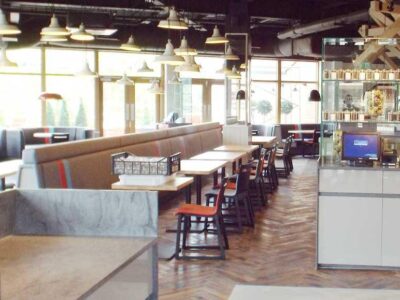We’re all familiar with the agonising decisions that come with choosing the right wood flooring for your space, but what about fitting it? Choosing the right direction for wood flooring installation has a significant impact on both aesthetics and functionality. The direction you run your wood flooring can significantly impact the overall look and feel of your space, making it essential to consider several factors before making a decision.

Considering Your Layout
The layout and dimensions of your room play a vital role in determining the direction of your wood flooring. In smaller spaces, running the planks parallel to the longest wall can create the illusion of a much larger space. Conversely, in larger rooms or open-plan areas, running the boards perpendicular to the longest wall can add visual interest and break up the space. Aim to run your flooring in the same line as the most frequently used entrance.
Consider installing diagonal flooring to add style to a small room without significant extra effort or expense. Typically set at a 45-degree angle but even at a slight angle of 10 degrees, diagonal flooring is a simple yet effective way to open up and unify a room.
Enhancing Natural Light
Natural light can influence the direction of wood flooring installation, as it can highlight the texture and grain of the wood. If your room receives ample natural light from windows or doors, consider running the boards parallel to the incoming light to enhance the room’s brightness and create a welcoming atmosphere.
Flow and Continuity
Achieving a sense of flow and continuity throughout is essential for creating a harmonious space. To maintain consistency between rooms, it’s advisable to run the wood flooring in the same direction throughout. However, if architectural features or transitions between spaces exist, you may need to adjust the direction accordingly to ensure a seamless transition.

Practical Considerations
Practical considerations such as subfloor conditions and existing architectural features should also be taken into account when deciding on the direction of your wood flooring. Running the boards perpendicular to the floor joists may provide better stability if your subfloor is uneven or requires some levelling. Additionally, if there are existing features like fireplace hearths or built-in cabinetry, consider how the direction of the wood flooring will interact with these elements.
Expert Advice from The Solid Wood Flooring Company
Ready to transform your space with the timeless beauty of wood flooring? Consult with The Solid Wood Flooring Company for expert guidance and premium quality materials. Our team of professionals can assist you in selecting the best direction for your wood flooring and choosing the perfect finish for your space. Don’t compromise on quality – trust The Solid Wood Flooring Company to bring your vision to life.
Remember, whether you prioritise maximising visual appeal, optimising natural light, ensuring continuity, or addressing practical concerns, thoughtful consideration of these factors will help you make an informed decision on the best direction for your wood flooring installation.




